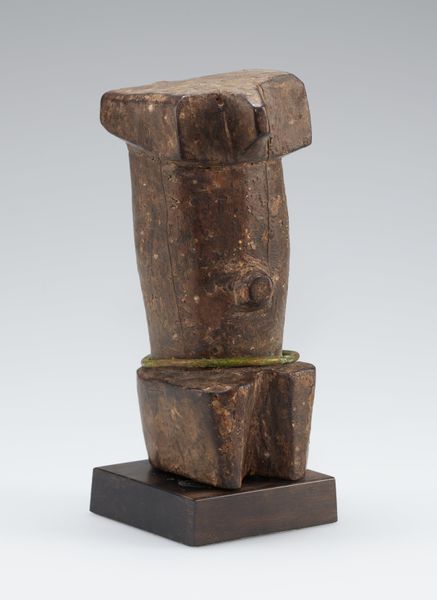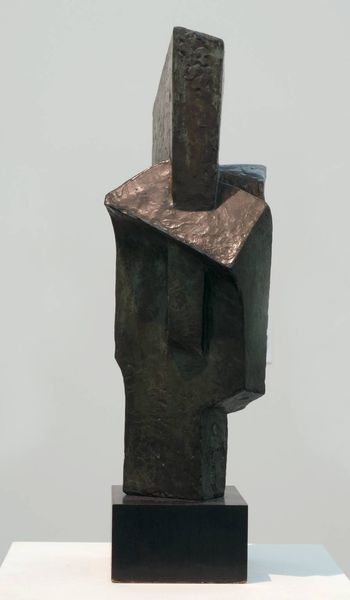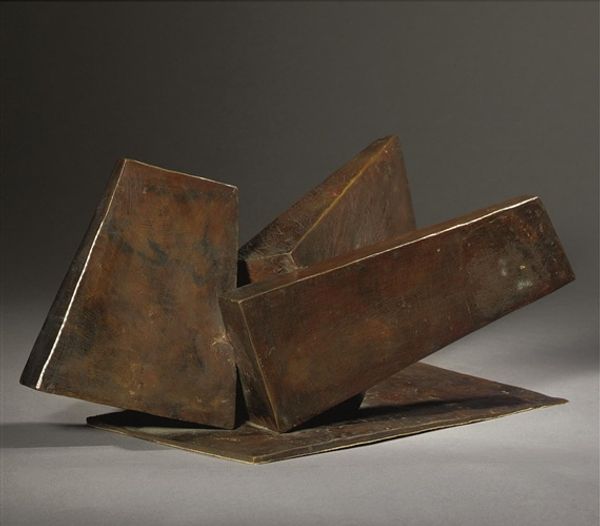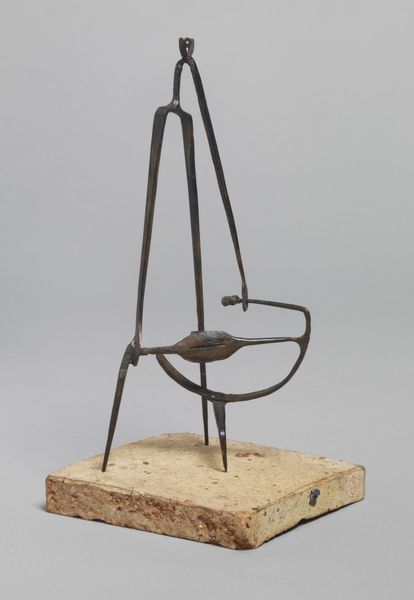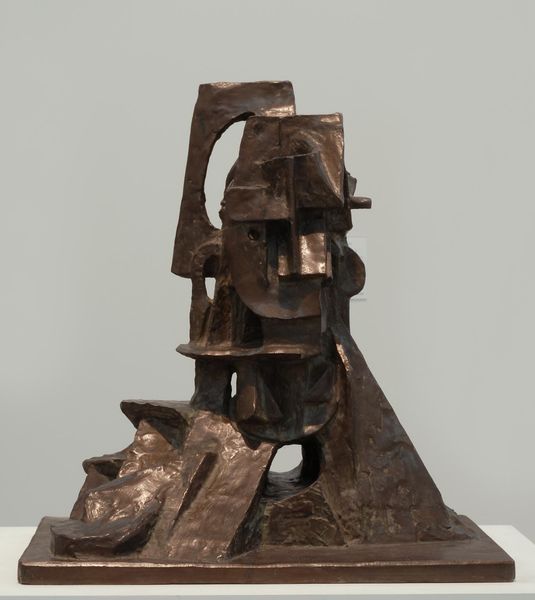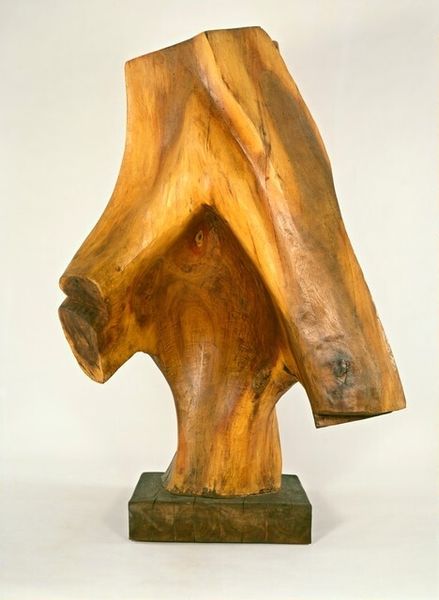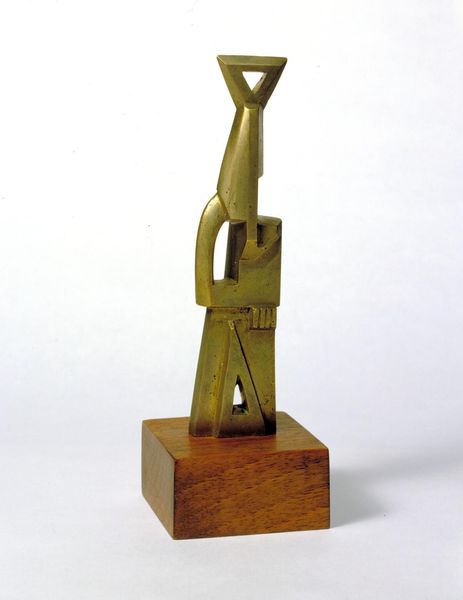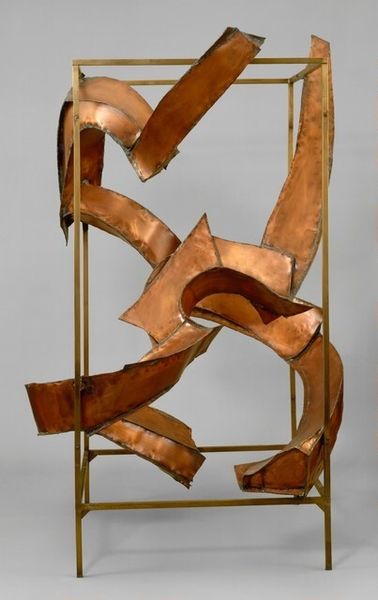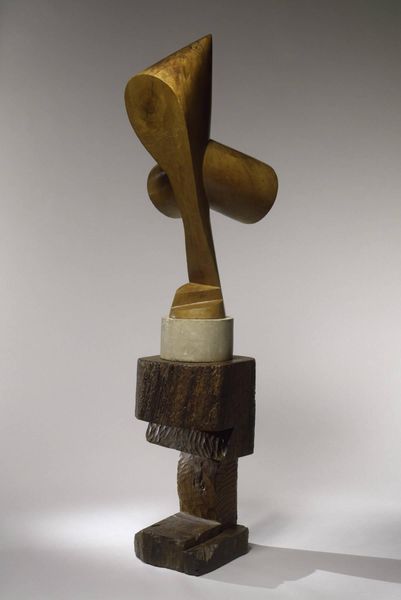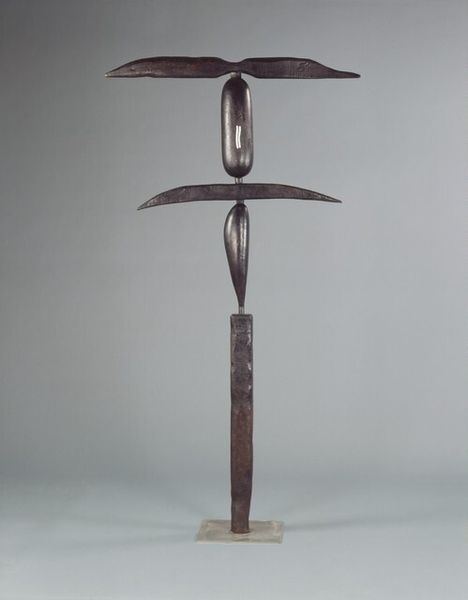
bronze, sculpture
#
abstract-expressionism
#
sculpture
#
bronze
#
form
#
geometric
#
sculpture
Dimensions: overall: 63.4 x 39 x 25.4 cm (24 15/16 x 15 3/8 x 10 in.)
Copyright: National Gallery of Art: CC0 1.0
Fritz Wotruba made this bronze Torso sometime in the mid-20th century. Wotruba was Austrian, and his work reflects the mood of postwar Europe. After the Second World War, sculptors moved away from traditional ways of representing the human figure. This sculpture is not about the perfection of the human body, but rather how that body can be broken down into geometric forms. Wotruba was thinking about how the traumas of war had affected the human body, and the social body as well. The torso suggests a monumental ruin, something ancient and modern at the same time. The blocks and planes of the sculpture reflect a new interest in abstraction, something Wotruba picked up during his time in Switzerland. The institutional framework of the artworld was expanding at the time. Wotruba went on to teach at the Vienna Academy of Fine Arts, where he was able to influence a new generation of sculptors. To understand Wotruba's work better, we can research the artistic and political climate of postwar Europe. The meaning of art is always contingent on the society that produces it.
Comments
No comments
Be the first to comment and join the conversation on the ultimate creative platform.
